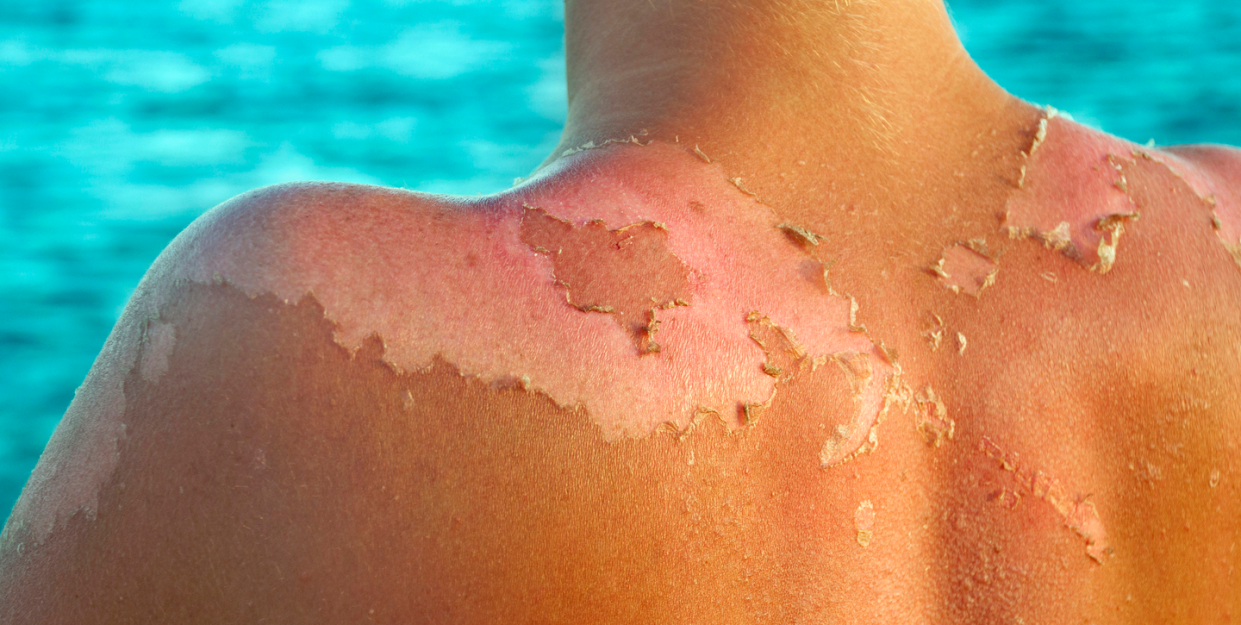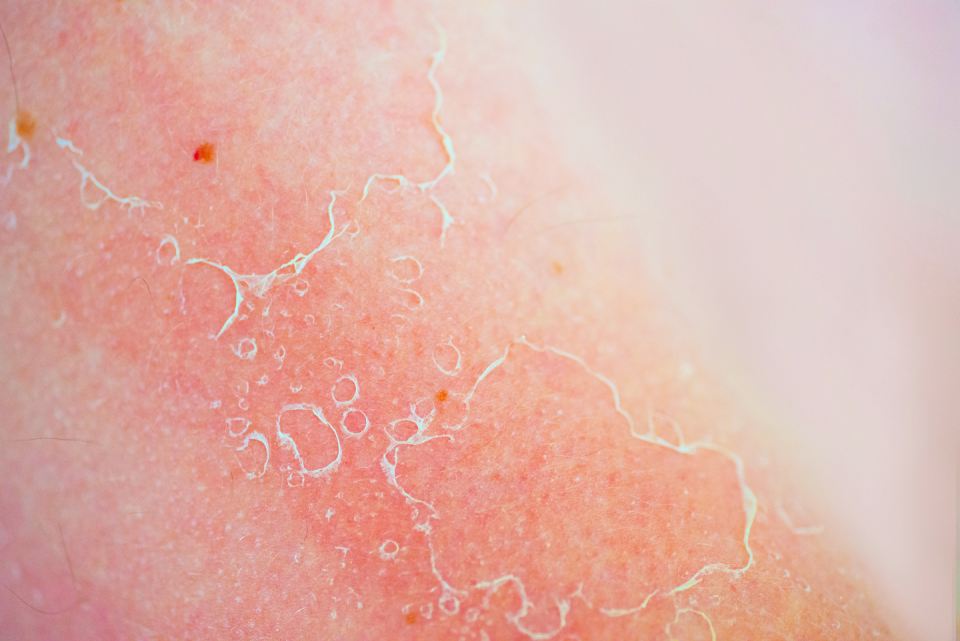The Safest Way to Heal Painful, Peeling Skin After a Nasty Sunburn

This article was medically reviewed by Mona Gohara, M.D., a board-certified dermatologist and member of the Prevention Medical Review Board.
You overdid the sun and underdid the sunscreen. Instead of rocking a golden glow, you’re a red-hot mess—and in a few days, you may be a flaky one, too.
But why, exactly, does your skin start to peel after a particularly bad sunburn? It all comes down to UV exposure. “Regardless of whether skin sheds or not, UV light can cause skin damage,” explains board-certified dermatologist Joshua Zeichner, M.D., director of cosmetic and clinical research in dermatology at Mount Sinai Hospital in New York City. “However, if your skin peels, then generally speaking there is a greater degree of damage.”
There are two main types of UV rays and sunlight contains a mix of both, according to the Skin Cancer Foundation. UVA rays are less intense but more prevalent than UVB rays. They penetrate the skin deeply, causing DNA damage and premature aging (think: sun spots and wrinkles). UVB rays, on the other hand, are the main cause of sunburn. Both play a role in the development of skin cancer.
When you don’t wear protective clothing or skimp on SPF, this UV radiation can wreak havoc on your skin cells. (In fact, just one or two blistering sunburns—or five non-blistering sunburns—can double your lifetime risk of melanoma, the deadliest form of skin cancer.) As a result, your body goes into damage control mode by trying to shed them. Hello, peeling skin.
How long does it take to peel after a sunburn?

It can take anywhere from three days to a week for peeling to start after a sunburn. The full process can last up to two weeks. As tempting as those flakes may be, do not pick or pull at them. “Peeling the skin can be gratifying as you see the flakes disappear—very much like the satisfaction people get from picking pimples,” explains Dr. Zeichner. “But it can further disrupt the skin barrier, leading to open, raw skin and increasing your risk of an infection.” Similarly, if blisters develop, do not pop them. It’s your skin’s way of protecting itself until it heals.
How to get rid of sunburn peeling fast
Once the damage is done, you can’t totally stop peeling from happening. However, you can help nourish and heal the healthy skin underneath.
“Keeping skin hydrated and protected can minimize the amount of noticeable dead skin. It will also minimize the itch and irritation,” says Samantha Conrad, M.D., board-certified dermatologist at Northwestern Memorial Hospital in Chicago. That means loading up on plenty of water and keeping your skin as moisturized as possible.
“A healthy skin barrier can help repair itself the best it can. A sunburn disrupts that barrier, leading to loss of hydration and inflammation,” adds Dr. Zeichner. “Use hydrating cleansers and moisturizers, like Dove Deep Moisture Body Wash and Vaseline Clinical Care Extremely Dry Rescue Lotion, to keep the skin in as good shape as possible.” Apply your moisturizer after a cool shower, when the skin is still slightly damp, to lock in hydration.
Dr. Conrad also recommends applying pure aloe vera (test a patch of skin first, to make sure you aren’t allergic!) and 1% hydrocortisone cream two to three times a day.
If your sunburn peeling is painful, taking an over-the-counter pain medication like ibuprofen or soaking in a cool bath can help you find relief. If you want to take it up a notch, consider adding oatmeal to your bath; research shows the ingredient has anti-inflammatory properties that can soothe dryness and itching.
Finally, make sure your wear soft, comfy fabrics that won’t rub, which can lead to more peeling.
Wait, can you exfoliate a sunburn to get rid of peeling?
Exfoliating may sound like a good idea, since it sloughs off dead skin cells, but both Dr. Zeichner and Dr. Conrad agree that using the methods above will be your safest bet. That said, if all those little flakes are driving you completely crazy, Dr. Conrad says you can gently (read: absolutely no scrubbing!) exfoliate with a clean washcloth once the skin is no longer red, itchy, or sensitive.
How to prevent sunburn peeling
Once your sunburn is fully healed, the newly exposed skin may be even more susceptible to UV damage, so be extra careful. Ultimately, the only way to prevent sunburn peeling is to avoid getting a sunburn in the first place. That means you should wear protective clothing when possible, like a hat, beach cover-ups, long sleeves, and sunglasses. And this time, don’t forget the sunscreen:
Always use a broad-spectrum sunscreen with an SPF of 30 or higher. Go for SPF 50 if you’re going to be doing lots of outdoor activities, like running or swimming.
Apply at least 1 ounce (a shot glass-sized amount) of sunscreen to your whole body. Lotions are typically more effective than sticks or sprays, as they are easier to rub in generously.
Reapply sunscreen every two hours or after swimming or sweating.
These dermatologist-approved options are a good place to start:
Support from readers like you helps us do our best work. Go here to subscribe to Prevention and get 12 FREE gifts. And sign up for our FREE newsletter here for daily health, nutrition, and fitness advice.
You Might Also Like

